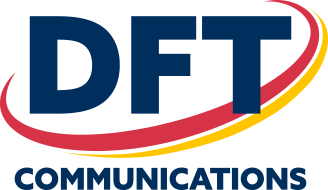Seneca Nation Begins Construction Work on Broadband Network
$9.5 Million Project Will Bring High-Speed Internet Access to Cattaraugus Territory
CATTARAUGUS TERRITORY, IRVING, N.Y. – The Seneca Nation took an important step this week toward closing the significant digital divide experienced by residents at a time when reliable and fast online access is crucial for education, health, safety and overall economic success.
Work has begun the initial phase of construction for the Nation’s new broadband network, funded in part by a U.S. Department of Agriculture (USDA) grant. Construction line crews are hanging strand wire and completing underground work along Route 438 on the Cattaraugus Territory. In the coming weeks, they will begin work on central office and data center locations to support the network before hanging more than 52 miles of fiber optic cable.
Overall, construction is expected to last three to four months. In addition to the fiber network, the Nation is also establishing high-speed wireless internet service to the Gordon Garrow and Buffalo Road communities.
Once all work is complete, more than 1,200 homes, businesses and Nation buildings, serving approximately 4,500 residents, will have access to high-speed, reliable internet service for the first time in Seneca history – a development that is long overdue.
“Our territories and our residents, including generations of Seneca students, have been left staggeringly behind, without basic services that are readily available in other communities,” said Seneca Nation President Matthew Pagels. “We’re 40 miles from the second largest city in New York, but we’ve been forced to live in a digital desert. Bringing connectivity to underserved individuals is a critical undertaking, and one that will dramatically improve their ability to access services and information for years to come.”
While high-speed internet access has become commonplace elsewhere, Seneca Nation residents, businesses and government and community facilities – including the Nation’s administration building, the Cattaraugus Indian Reservation Volunteer Fire Department, the Early Childhood Learning Center, library, public works and utility departments, community center, and other facilities – have had to get by with slow speed wireless service and less than adequate satellite service. The challenges presented by this lack of service were exacerbated during the pandemic, when precautions put in place to prevent the spread pf COVID-19 forced virtually all interactions into the virtual space.
“When classes went remote, some students had to sit outside of the library or area businesses searching for a Wi-Fi signal just to get their school work done,” said President Pagels. “Even from a government perspective, trying to hold virtual meetings made for a very frustrating situation for our community.”
Construction of the Nation’s broadband network has been years in the making. In 2019, the Nation was awarded a $4.5 million grant from the USDA’s ReConnect Pilot Program to aid the effort. The Nation itself is investing an additional $5 million, including approximately $3 million in funds received through the American Rescue Plan Act, to make the network a reality.
A great deal of work was necessary to clear the way for this week’s construction milestone. In addition to months of design, engineering and the procurement of the fiber cables, crews had to complete significant pre-construction work, including tree removal and the replacement of 260 utility poles.
Online service will become available in phases, as construction is complete, with the first users coming online in early 2022. The Nation is partnering with DFT Communications, a Fredonia-based telecommunications company, to offer a selection of residential and business service packages, with download speeds ranging from 100Mbps to 500Mbps, which is significantly faster than the Federal Communications Commission broadband standard of 25Mbps and will allow multiple users in every household to simultaneously stream and download without service interruptions.
“We’re on the verge of an exciting new day,” President Pagels said. “Through this transformational investment, the Nation will be able to finally and forever knock down the digital barriers and close the digital divide that have existed for far too long.”

